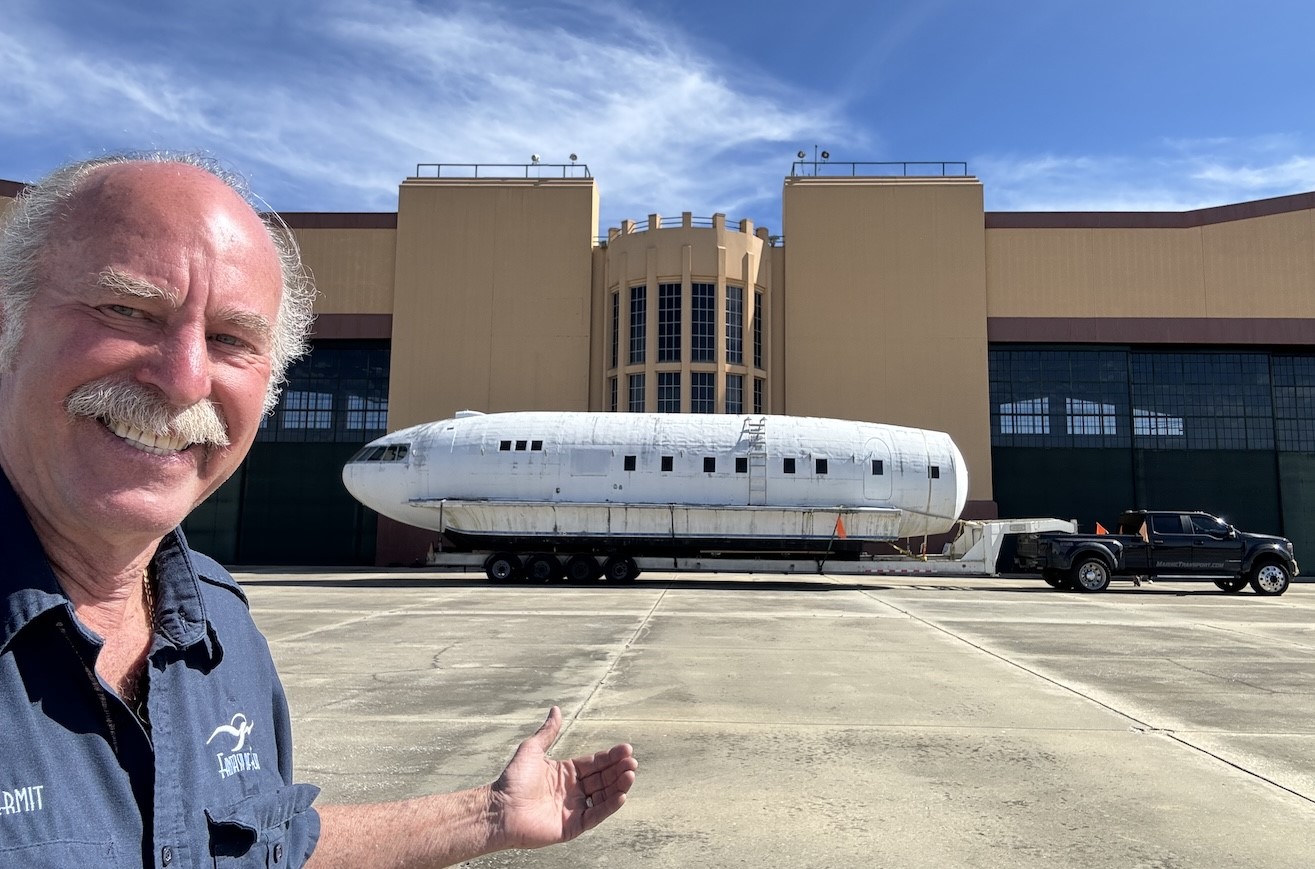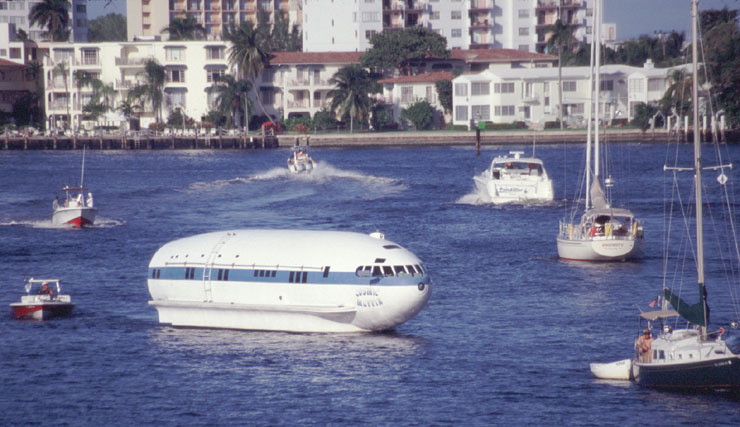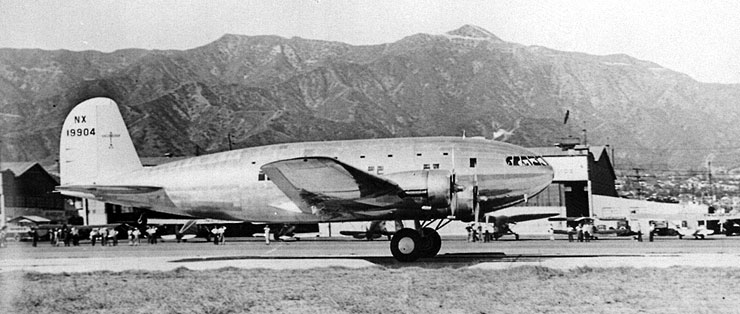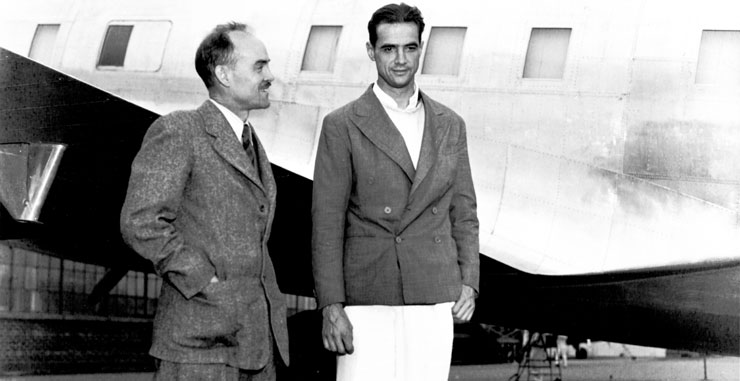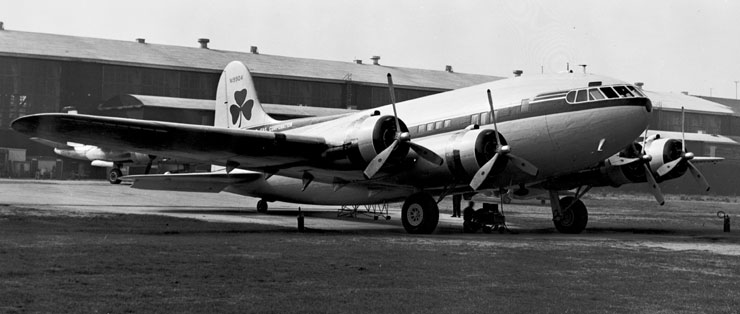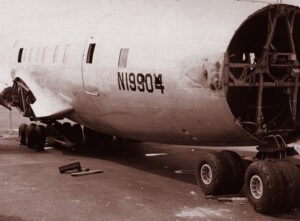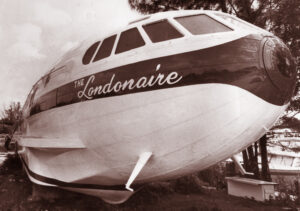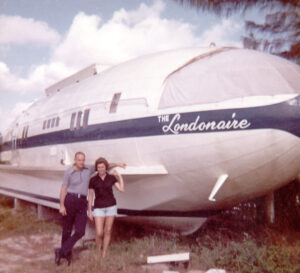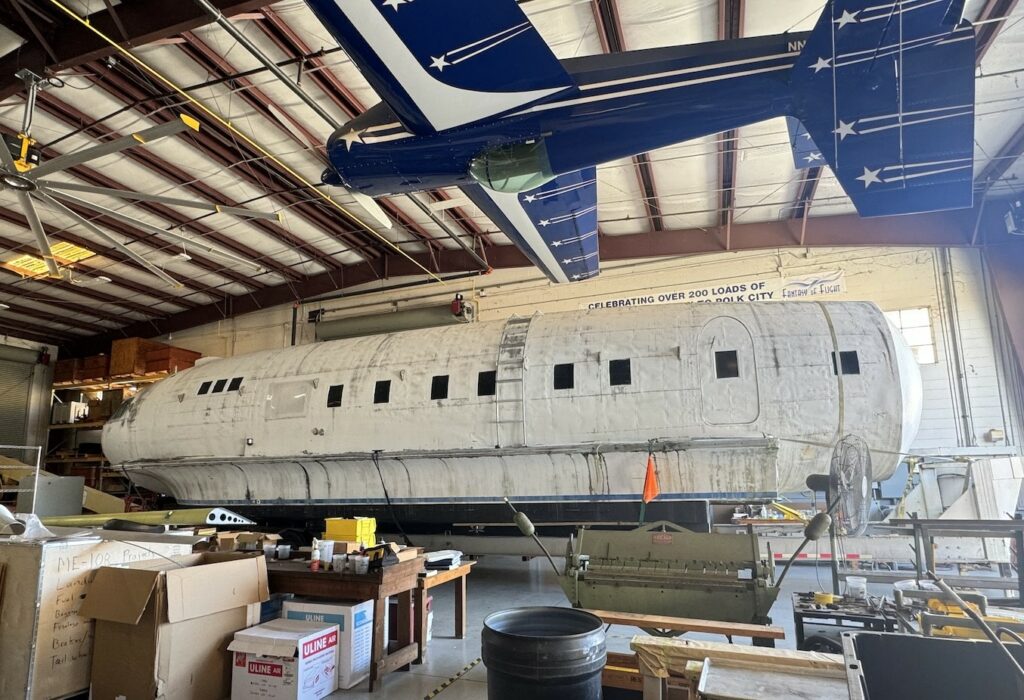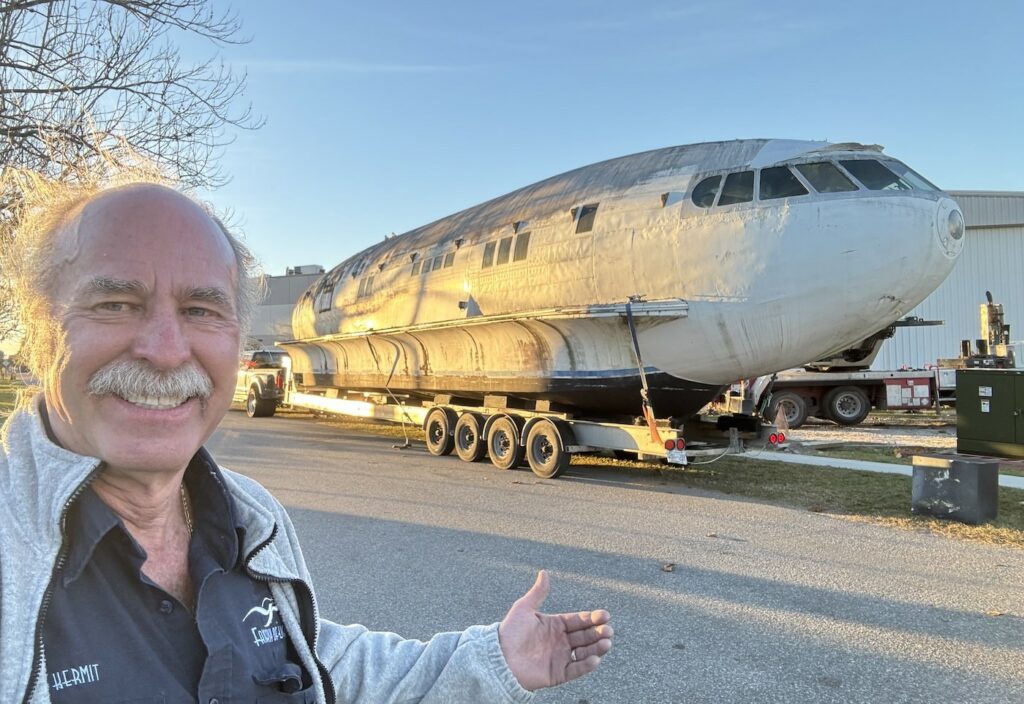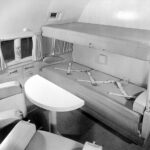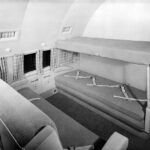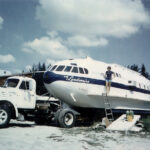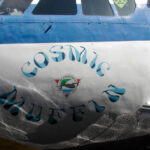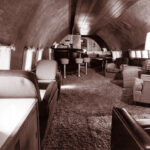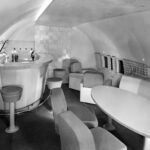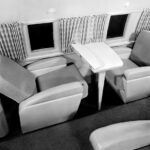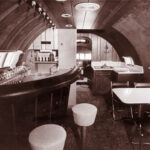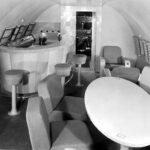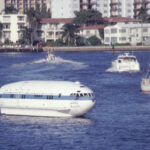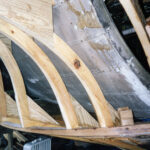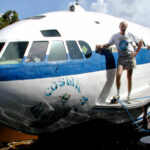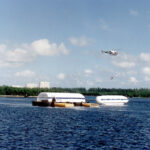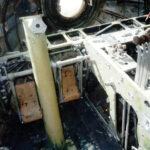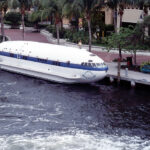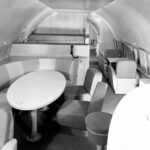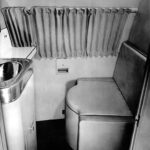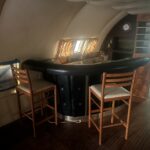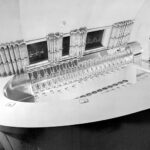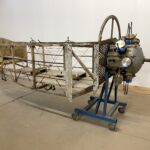By Adam Estes and Luc Zipkin
At this point, when discussing the extensive collection of Kermit Weeks and Fantasy of Flight of Polk City, Florida, the question is not “How many planes does Kermit have?”, but rather “What are the planes he doesn’t have?” Well, if anyone has been keeping score, make sure to check the Boeing 307 Stratoliner off the list– sort of. Mr. Weeks, known around the world as one of the planet’s most prolific and longest-standing collectors of vintage aircraft, announced on Friday, February 2nd that he had been granted ownership of what he will be calling “The Floating Penthouse,” a bizarrely wonderful adaptation of a particularly historic Stratoliner into houseboat form.
Perhaps one of the most beautiful propliners ever built, the Boeing 307 Stratoliner is the epitome of Art Deco design in airplane form, and was the first pressurized airliner to enter commercial service. If there was one person most responsible for the existence of the Stratoliner outside Boeing, it would be Donald Webb Tomlinson, a former U.S. Navy pilot who had conducted five years of high-altitude flight testing for Transcontinental and Western Airlines (TWA; later rebranded as Trans World Airlines) flying both the Douglas DC-1 and Northrop Gamma, and determined that a four-engined, pressurized airliner would be best suited to take advantage of flying above the hazardous weather that all airliners at this point had to travel through, especially thunderstorms that could block mountain passes within the Rocky Mountains on transcontinental flights. Having also test-flown the Boeing Model 299, the prototype for the B-17 Flying Fortress, Tomlinson and TWA determined that the Model 299 could form the basis for what would become the world’s first pressurized airliner. The Model 307 took the 299’s wings, engines, tail, and landing gear, but added a larger fuselage, whose pressurization system was extensively tested by Boeing engineers. Among the methods tested by Boeing was to apply soapy water all over the fuselage during pressurization tests and spotting leaks through the soapy bubbles. The Stratoliner was also an attempt to create an alternative to what would become the Douglas DC-4E, which had become too complex and costly for Pan American, Eastern, and Transcontinental & Western Airlines.
With the first prototype making its maiden flight on December 31, 1938, the Stratoliner began to attract the interest of airlines not only across the United States but from around the world. Tragedy struck, however, on March 18, 1939, when the first prototype, NX19901, was lost after entering a spin and having its wings overstressed during recovery near Adler, Washington. All ten occupants, including a representative of KLM and an engineer with the Dutch Aviation Authority, were killed. One result of the crash was the modification of a larger vertical stabilizer and rudder on the remaining Stratoliners. This tail stabilizer was later added to the B-17E and all subsequent B-17s after that as well. The Stratoliner, replete with interiors by French-born designer Raymond Loewy, was certified to fly with passengers in 1940. The outbreak of WWII, however, meant just 10 examples would be built. TWA’s fleet of five aircraft were flown in USAAF colors with TWA crews as the C-75, carrying the names of five American Indian tribes (Comanche, Cherokee, Zuni, Apache, and Navajo), which plugged a gap in long-range transatlantic transports until the arrival of the Douglas C-54 Skymaster. Pan Am’s three Stratoliners continued routes through Latin America, but under the direction of the Army Air Force.
After the war, the Stratoliners returned to civilian use, but with the return of Douglas C-47s and C-54s and the introduction of the Lockheed Constellation, the Stratoliners were simply too few in number to operate profitably. By 1951, TWA sold all of its Stratoliners to the French airline Aigle Azur, which would also purchase the former Pan Am Stratoliner Clipper Rainbow. Some of these aircraft found their way to Cambodia and Laos, but one by one, all of the Stratoliners in overseas service would either crash or were written off due to lack of spare parts after ground incidents. Eventually, one Stratoliner, the former Pan Am Clipper Flying Cloud, N19903, having spent time in Haiti, made its way back to the United States, where it was acquired by the Smithsonian’s National Air and Space Museum, who loaned it to the Pima Air and Space Museum in Tucson, Arizona. The Smithsonian later worked with a team of volunteers at Boeing to restore the aircraft to its former airworthy glory; on its final delivery flight, it ran out of fuel and ditched into Elliott Bay, Washington. The Flying Cloud was restored yet again and now sits proudly at the Steven F. Udvar-Hazy Center at Dulles International Airport near Chantilly, Virginia. Though it is the last intact Stratoliner, another survivor of sorts has its own fascinating history.
The Stratoliner that became a houseboat started life at Boeing as construction number 1997, and was issued registration NX19904. On June 13, 1939, the aircraft was purchased by business magnate Howard Hughes, who had also become a major shareholder in TWA, for $315,000. Having recently set a speed record in July 1938 by flying a Lockheed Model 14 Super Electra from Floyd Bennett Field, New York around the world in four days, he hoped to break his own record with the new Stratoliner. Extra fuel tanks were added to NX19904, but before Hughes could start on this new flight, Germany invaded Poland on September 1, 1939, plunging Europe into war. After the attack on Pearl Harbor officially brought America into World War II, Hughes kept NX19904 in storage at Grand Central Airport in Glendale, California in order to keep the aircraft out of U.S. government hands. No longer concerned with circumnavigation speed records, Hughes modified the aircraft once more, by adding luxurious furnishings designed by Loewy. The onboard amenities included a bar, master bedroom, two bathrooms, and living room accommodations. He also had the Stratoliner’s original Wright R-1820s swapped out for four Wright R-2600 engines. Fittingly, Hughes named his Stratoliner The Flying Penthouse and would host Hollywood celebrities in the aircraft.
In 1949, Hughes sold the aircraft to Texas oil tycoon Glenn McCarthy, whose rags-to-riches story later inspired the James Dean movie Giant. McCarthy had spent $21 million building the Shamrock Hotel in downtown Houston, and purchased The Flying Penthouse, which he renamed Shamrock to promote the $1 million grand opening ceremony on St. Patrick’s Day 1949. Though the Hotel opening failed and McCarthy defaulted on many of his debts, he managed to keep the airplane.
By 1962, the aircraft was sold to Florida Jet Research in Fort Lauderdale. During the flight from Houston, however, a fire in the cockpit forced the crew to make an emergency landing in Gulfport, Mississippi. The damage was repaired and the aircraft made it to Fort Lauderdale, but parked outside at the airport, it was damaged by Hurricane Cleo in August of 1964. Purchased by aircraft broker Joseph MacCaughtry, an effort was made to repair the aircraft, but this effort proved too costly and the most valuable parts from N19904, including its engines, were stripped and the aircraft was left to its fate at the airport. While this may have been the end of this Stratolineer’s flying days, it was far from the end of its story.
1969 would see real estate broker and pilot Kenneth London purchase the aircraft at an auction for $62.00. Knowing that he could not return the Stratoliner to the skies, he reasoned that he could introduce it to the water! Thus, he removed the wings and tail, trucked the fuselage to a marina, and spent the next four years making the fuselage seaworthy as a motor yacht. In 1974, the new Londonaire, as he called it, took to the waters of Fort Lauderdale, propelled by two V-8 engines with controls linked to the yokes and throttle quadrant in the cockpit and fitted with a new interior. The Londonaire would become very popular within both the aviation and the yachting circles in Florida, and its notoriety continued when the “plane boat” came under the ownership of Dave Drimmer in 1981, who found that the Londonaire needed an extensive remodel and hull repairs. Following this refurbishment, Drimmer would receive attention from all kinds of publications, from the Miami Herald to People magazine and Oprah. It eventually received the name Cosmic Muffin from the late singer Jimmy Buffett, also a passionate aviator, and included the Cosmic Muffin in his first novel Where is Joe Merchant?, and his song, “Desdemona’s Building a Rocket Ship” from his 1996 album Banana Wind.
By 2016, Drimmer decided to have the Cosmic Muffin displayed at the Florida Air Museum in Lakeland, Florida, the venue for the Sun ‘n Fun Aerospace Expo. While the museum did seem a natural place due to the Stratoliner’s deep roots in Florida and its extensive archival collections on Howard Hughes, there was no room to display it indoors.
[wbn_ads_google_three]
With outdoor storage risking damage in the humid Florida air, Kermit Weeks and Dave Drimmer approached the museum about acquiring the Cosmic Muffin, which had also been displayed with the name Which Craft?, or was left simply unmarked. As Kermit’s social media posts have now shared, this endeavor was successful, and the Cosmic Muffin has safely arrived in Fantasy of Flight’s restoration workshop. With Kermit very passionate about Howard Hughes’ story, and being the proud owner of Hughes’ Sikorsky S-43 flying boat, the “plane boat” is in good hands, and will receive a well-deserved restoration of both its exterior and its interior. Kermit will also pay homage to Hughes and the Stratoliner in another way by giving the craft a new name, The Floating Penthouse, and seeks to return the craft to the water after the conclusion of its upcoming restoration and use it at Fantasy of Flight.
Vintage Aviation News Publisher Moreno Aguiari, was able to speak with Kermit about his recent acquisition, where the prolific aircraft collector shared some fascinating details. “I saw the thing a long time ago down in Fort Lauderdale when I was flying the Air & Sea Show … I remember going inside. It would’ve been about 2000 or so, something like that, maybe later.”
“I thought, ‘This is cool as crap,'” Kermit says. “[Then] I got a call about a year and a half ago. I knew that it had been donated to Sun ‘n Fun. And then I remember seeing it sitting out on the side on the back there … and it just kept deteriorating and deteriorating and deteriorating. I think it had about … six to eight years, I think, just sitting out there,” he continues. Since the then-owners needed to find a better home for it, after some back-and-forth, Weeks ended up taking the Cosmic Muffin home for only the cost of the trailer to move it back to Fantasy of Flight, in Polk City, from Lakeland, where Sun ‘n Fun is hosted. He further reports: “It’s inside now. I have no short-term plans. The short-term plan was to get it inside and try and stop it from deteriorating any further. But the long-term plan would be to basically do exactly what [Drimmer] did with it, put it back as a boat. So when Fantasy of Flight Act III opens, there’s an opportunity to use it for party rentals, weddings, whatever anybody wants to do … But people could see it.”
Kermit also shared a great little Hughes-related detail about his Stratoliner: “Howard bought [this] one and he decked it out at some point for all his Hollywood friends … he was dating Rita Hayworth at the time. You come in [to the aircraft] and at some point, you’ll see three windows that are higher than the normal windows, and those three windows are where the bar is. And she asked, and Howard raised those up there so I guess when she was sitting behind the bar, she could see outside and see the clouds go by.”
[wbn_ads-google_four]
We would like to graciously thank Kermit for taking the time to talk about The Floating Penthouse and look forward to seeing it on Lake Agnes with the opening of Fantasy of Flight’s much-anticipated Act III. Stay tuned for further updates!
Dave Drimmer has also set up a website full of photos and materials on the history of the Flying Penthouse/Cosmic Muffin here: Welcome Aboard “Which Craft?” (planeboats.com)







